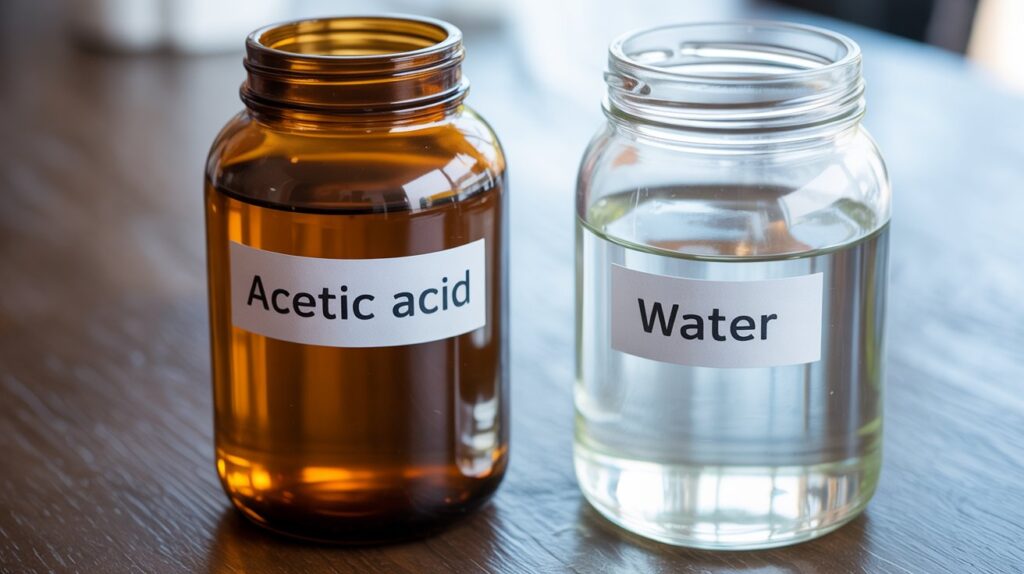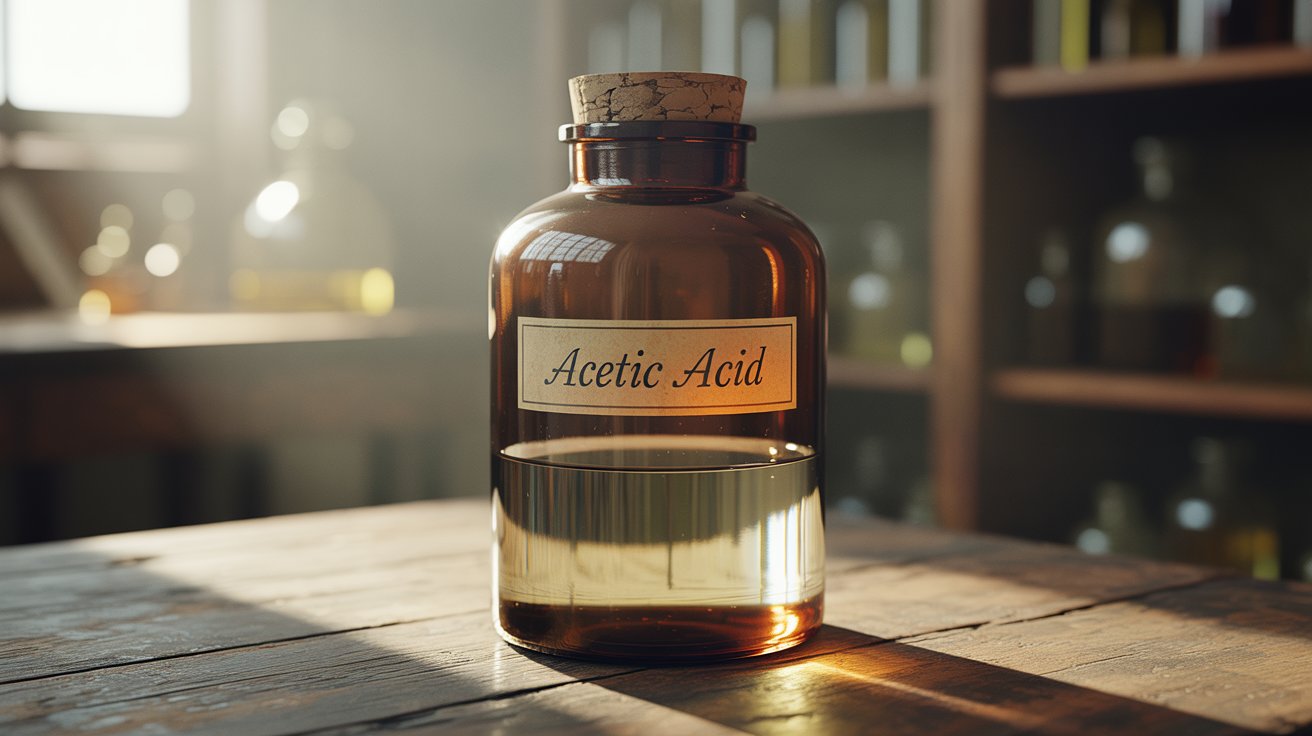Acetic acid, also known as ethanoic acid, is a clear, colorless liquid with a pungent odor. It is a weak acid, meaning it does not completely dissociate in water, and is commonly found in household vinegar. Distilled water, on the other hand, is water that has been purified through a process of distillation to remove impurities and minerals. When acetic acid is added to distilled water, it can create a solution with a variety of uses in different industries, from food and beverage to pharmaceuticals and cleaning products.
Acetic acid and distilled water are both widely available and relatively inexpensive, making them accessible for a wide range of applications. Understanding the chemical properties and reactions of these two substances can provide valuable insights into their potential uses and limitations.
The Chemical Reaction Between Acetic Acid and Distilled Water
When acetic acid is added to distilled water, a chemical reaction occurs that results in the formation of a solution of acetic acid in water. This reaction is exothermic, meaning it releases heat as the two substances mix. The acetic acid molecules dissociate into hydrogen ions (H+) and acetate ions (CH3COO-) in the water, creating a slightly acidic solution with a pH below 7.
The reaction between acetic acid and distilled water is reversible, meaning that the equilibrium between the undissociated acid and its ions can be shifted by changing the conditions of the solution, such as temperature or pressure. This property makes acetic acid an important component in many chemical processes, as its behavior can be manipulated to achieve specific results.
The Role of Acetic Acid in pH Adjustment
One of the key roles of acetic acid in the context of distilled water is its ability to adjust the pH of a solution. The addition of acetic acid to distilled water can lower the pH of the solution, making it slightly acidic. This property makes acetic acid a valuable tool in various industries, such as food and beverage production, where pH control is crucial for product quality and safety.
In addition to its role in pH adjustment, acetic acid also acts as a preservative and antimicrobial agent, making it useful for extending the shelf life of certain products. Its ability to inhibit the growth of bacteria and other microorganisms makes it a popular choice for food preservation and cleaning products.
Understanding the Properties of Acetic Acid and Distilled Water
Acetic acid and distilled water each have unique properties that make them valuable in their own right. Acetic acid is a weak acid with a characteristic sour taste and pungent odor. It is soluble in water and other polar solvents, making it easy to mix with other substances. Distilled water, on the other hand, is pure water that has been stripped of impurities and minerals through the process of distillation. It has a neutral pH and is often used in laboratory experiments and medical procedures where purity is essential.
When combined, acetic acid and distilled water form a solution with properties that are distinct from either substance alone. The resulting solution has a slightly acidic pH, making it suitable for certain applications where acidity is desired. Understanding these properties is essential for using acetic acid and distilled water effectively in various industries.
Applications of Adding Acetic Acid to Distilled Water
The addition of acetic acid to distilled water creates a solution with a wide range of applications across different industries. In the food and beverage industry, acetic acid is commonly used in the production of vinegar, pickles, and condiments. Its ability to lower the pH of a solution makes it useful for preserving food products and enhancing their flavor.
In the pharmaceutical industry, acetic acid is used as an excipient in the production of medications and as a solvent for certain drugs. Its antimicrobial properties make it valuable for formulating sterile solutions and ointments. In addition, acetic acid is used in the production of various chemicals, plastics, and textiles, where its ability to react with other substances is exploited for specific purposes.

Safety Considerations When Working with Acetic Acid and Distilled Water
While acetic acid and distilled water have many valuable uses, it is important to handle them with care due to their potential hazards. Acetic acid can cause irritation to the skin, eyes, and respiratory system if not handled properly. It is important to use appropriate personal protective equipment, such as gloves and goggles, when working with acetic acid to prevent exposure.
In addition, acetic acid should be stored in a well-ventilated area away from incompatible substances to prevent the risk of chemical reactions or spills. When handling distilled water, it is important to ensure that it remains free from contamination to maintain its purity. Proper storage and handling procedures should be followed to prevent the introduction of impurities into the water.
Exploring the Benefits and Limitations of Adding Acetic Acid to Distilled Water
In conclusion, the addition of acetic acid to distilled water creates a solution with a variety of uses in different industries. Its ability to adjust the pH of a solution, preserve food products, and inhibit microbial growth makes it valuable for applications ranging from food production to pharmaceuticals. However, it is important to handle acetic acid and distilled water with care due to their potential hazards.
Understanding the properties and chemical reactions of acetic acid and distilled water is essential for using them effectively in various applications. By exploring their benefits and limitations, we can make informed decisions about when and how to use these substances to achieve specific results. Whether in the kitchen or the laboratory, acetic acid and distilled water offer valuable tools for achieving desired outcomes in a wide range of industries.



